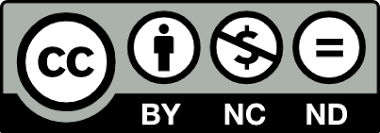TEACHING SURFACE MEASUREMENT UNITS TO ELEMENTARY SCHOOL STUDENTS
Abstract
Keywords
Full Text:
PDFReferences
Abdullayeva B.S., N.A.Xamedova M. Xusanova Methodological manual "Methodology of using pedagogical technologies in primary grade mathematics lessons" - Tashkent 2010, 135 pages
Abdullayeva B.S.,.O’rinboyeva L.O’, Muhitdinova Sh.S, Ishankulova L.T.. Methodology of teaching geometrical materials to elementary school students. Educational-methodological guide intended for students of the 5141600-"primary education and educational work" bachelor's course of higher educational institutions of pedagogy - T.: OOO "Jahon - Print", 2011. - 90 pages.
Abdullayeva B.S., Xo’jamurodova Z., Umarova M., Proceedings of the republican scientific-practical conference on the topic "Relationship of mathematics and native language sciences" "Ensuring interdisciplinary coherence in the process of general secondary and secondary special vocational education" T.N. Research Institute of Pedagogical Sciences of Uzbekistan named after Qori Niyozi, Tashkent, November 20-21, 2009, pages 241-243).
Adams, C., & van Manen, M. A. (2017). Teaching phenomenological research and writing. Qualitative Health Research, 27(6), 780-791.
Akhmedov M and others Mathematics 1, Tashkent.: Ozinkomsentr, 2003, p. 160.
Azizxodjayeva N.H "Pedagogical technology and pedagogical skills" - Tashkent.: TDPU, 2003, 174 pages.
Atta, M. A., Ayaz, M., & Nawaz, Q. (2015). Comparative study of inductive & deductive methods of teaching mathematics at elementary level. Gomal University Journal of Research [GUJR], 31(1), 20-28.
Ball, D. L. (2014). Teaching, with respect to mathematics and students. In Beyond classical pedagogy (pp. 11-22). Routledge.
Blazar, D. (2015). Effective teaching in elementary mathematics: Identifying classroom practices that support student achievement. Economics of Education Review, 48, 16-29.
Bungao-Abarquez, E. (2020). The use of manipulative in teaching elementary mathematics. International Journal of Linguistics, Literature and Translation, 3(11), 18-32.
Bikboyeva H. U. Methodology of teaching mathematics in primary grades. Tashkent. "Teacher" 1996. 510 pages. J
Harits, M. S., Sujadi, I., & Slamet, I. (2019, October). Technological, pedagogical, and content knowledge math teachers: To develop 21st century skills students. In Journal of physics: Conference series (Vol. 1321, No. 3, p. 032011). IOP Publishing.
Jana, P., & Adna, S. F. (2021). E-Learning During Pandemic Covid-19 Era Drill Versus Conventional Models. International Journal of Engineering Pedagogy, 11(3).
Kuiper, E., & de Pater-Sneep, M. (2014). Student perceptions of drill-and-practice mathematics software in primary education. Mathematics Education Research Journal, 26(2), 215-236.
Kurniawan, D. E., Dzikri, A., Widyastuti, H., Sembiring, E., & Manurung, R. T. (2019, March). Smart mathematics: a Kindergarten student learning media based on the drill and practice model. In Journal of Physics: Conference Series (Vol. 1175, No. 1, p. 012037). IOP Publishing.
Lehtinen, E., Hannula-Sormunen, M., McMullen, J., & Gruber, H. (2017). Cultivating mathematical skills: From drill-and-practice to deliberate practice. ZDM, 49, 625-636.
Nurlaily, V. A., Soegiyanto, H., & Usodo, B. (2019). Elementary School Teachers' Obstacles in the Implementation of Problem-Based Learning Model in Mathematics Learning. Journal on Mathematics Education, 10(2), 229-238.
Polly, D. (2017). Elementary school teachers’ uses of mathematics curricular resources. Journal of Curriculum Studies, 49(2), 132-148.
Ponce, P., Molina, A., Hernández, L., Acha, E., Morales, B., & Huitron, C. (2017). Teaching math in elementary schools by LabVIEW and LEGO robots. In Advances in Automation and Robotics Research in Latin America: Proceedings of the 1st Latin American Congress on Automation and Robotics, Panama City, Panama 2017 (pp. 255-270). Springer International Publishing.
Peddycord-Liu, Z., Harred, R., Karamarkovich, S., Barnes, T., Lynch, C., & Rutherford, T. (2018). Learning Curve Analysis in a Large-Scale, Drill-and-Practice Serious Math Game: Where Is Learning Support Needed?. In Artificial Intelligence in Education: 19th International Conference, AIED 2018, London, UK, June 27–30, 2018, Proceedings, Part I 19 (pp. 436-449). Springer International Publishing.
Rathakrishnan, M., Raman, A., Haniffa, M. A. B., Mariamdaran, S. D., & Haron, A. B. (2018). The drill and practice application in teaching science for lower secondary students. International Journal of Education, Psychology and Counseling, 3(7), 100-108.
Sudirman, S., & Zain, M. I. (2023). Application of The Drill Method to Improving Science Learning Outcomes. Jurnal Penelitian Pendidikan IPA, 9(4), 1886-1891.
Schoenfeld, A. H. (2016). Reflections on doing and teaching mathematics. In Mathematical thinking and problem solving (pp. 53-75). Routledge.
Shoimov B.S, Bozorov M.N. Determination of trigonometric functions using functional equations. “Jornal of new century innovations†https://www.newjournal.org/index.php/new/article/view/12395.
Umayev M. Laboratory training on the methodology of teaching mathematics in primary grades. Tashkent. "Generation of the New Century" 2006. 328 pages.
Vagle, M. D. (2018). Crafting phenomenological research. Routledge.
Van Manen, M., & van Manen, M. (2021). Doing phenomenological research and writing. Qualitative Health Research, 31(6), 1069-1082.
Wilson, A. (2015). A guide to phenomenological research. Nursing Standard (2014+), 29(34), 38.
DOI: https://doi.org/10.26877/jwp.v4i2.19884
Refbacks
- There are currently no refbacks.
Copyright (c) 2024 Murot Nashvandovich Bozorov

This work is licensed under a Creative Commons Attribution-NonCommercial-NoDerivatives 4.0 International License.
Jurnal Wawasan Pendidikan
ISSN 2807-5714 (Print), ISSN 2807-4025 (Online)
Universitas Persatuan Guru Republik Indonesia Semarang
Jl. Sidodadi Timur No. 24 -Dr. Cipto, Semarang
Prasena Arisyanto, S.Pd., M.Pd
Email: prasenaarisyanto@upgris.ac.id

This work is licensed under a Creative Commons Attribution-NonCommercial-NoDerivatives 4.0 International License









